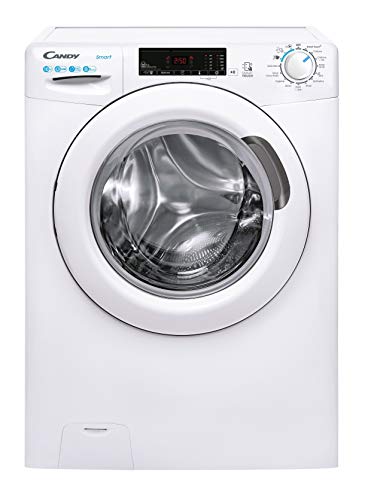Why Buy a 10kg Front Loader?
The front loader of 10kg is perfect for large loads of laundry with plenty of space for big wash cycles and 13 wash programs including handwash. With smart tech and advanced features, it's the ideal partner for home laundry.
Front loaders typically take longer to wash, are not available in larger capacities and can often be prone to mildew and mould. However, they are much more energy and water efficient than top loaders.
Energy
The major energy expense in front-loaders 10kg is the electricity that is used to heat the water to the operating temperature and run motor. These costs can be offset with less energy usage in operation when compared with top-loaders, notably less power used during the agitation process and during spin, and less water. Certain machines come with a low-water wash option which uses significantly less water than the cotton cycle, saving on both water and energy consumption.
In general, front-loading washers consume less soap than top-loaders. The drum's tumbling also reduces foamy suds and reduces overflows, without affecting the cleaning. However the door seals and bellows may be more prone to wear than those in top-loaders. In washersanddryers , the top-loader's mechanical agitator can cause significant wear and abrasion to clothing fabrics, as it presses clothes against one with paddles that are constantly dropping and dragging them through the wash. The degree of abrasion can be measured by the amount of fabric that is accumulated in a dryer's lint filter, since the majority of lint is loose fibers that have been absorbed by clothing during drying and washing. A lot of top-loaders are designed to operate at lower speeds and may include a "freshening cycle" to clean the bellows or mechanical gears regularly.
Water
Top-loading washers require an impeller or an agitator to force soap and water through the clothing, causing wear and abrasion. Front-loaders however, use paddles to gently move clothes around the spinning drum while cleaning, thereby reducing wear. The rate of such wear can be roughly estimated by the amount of lint collected in dryer lint filtering systems, which is mostly composed of threads that are stray from clothing when drying and washing.
Front-loading machines are less likely to leak because they require less water than top-loaders. True front-loaders may require a bellows or seal to prevent water from spraying out of the open door during operation, however these systems typically do not require maintenance as regularly as their counterparts on top-loaders.
Front-loaders are less energy-intensive than top-loaders, as they can utilize hot or cold water and some even do it without a heating source. This efficiency could reduce operating costs for the same laundry load in places where water, energy, and detergent are costly.

